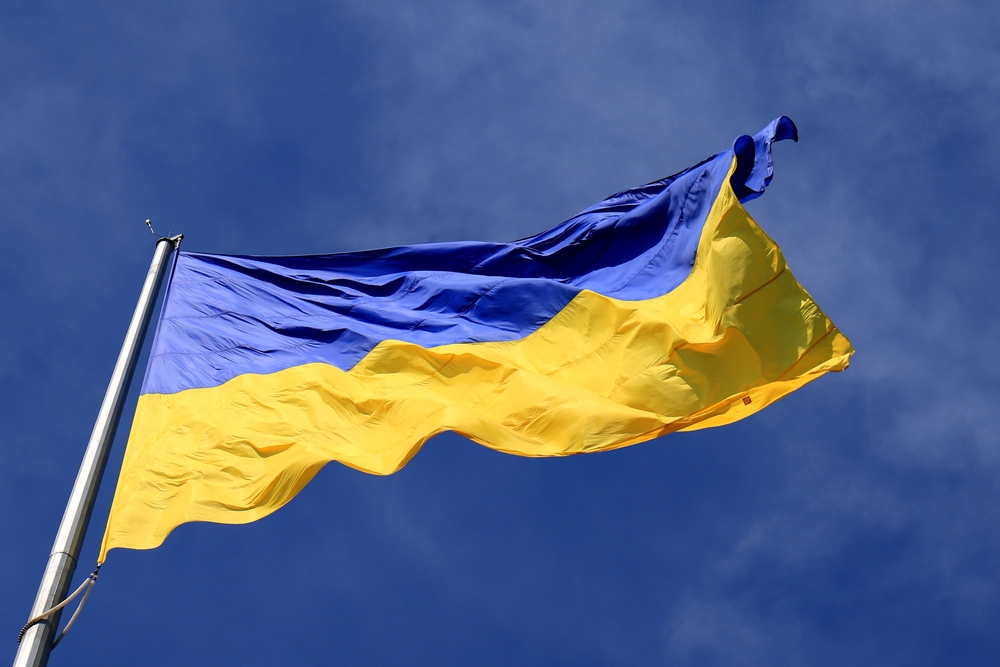G7 performance on regional security: Ukraine
The G7 leaders have committed to intensify support for Ukraine in the face of ongoing Russian aggression
On 24 February 2023, G7 leaders met virtually with Ukrainian president Volodymyr Zelensky. They strongly condemned Russia’s onslaught on Ukraine, and committed to intensify diplomatic, financial and military support for Ukraine. Permeating the energy, security, health, economic and human rights concerns from the war is a fear of Russia’s use of nuclear weapons. This represents a new stage in G7 performance on Ukraine.
Conclusions
The G7 made its first communiqué reference to Ukraine in 1986, in 8% of the total words that year, responding to the deadly nuclear accident at Chernobyl. Ukraine reappeared in 1992, now in terms of regional security, taking 2% of the communiqué. That portion rose in the following years, returning to 8% in 1995.
In the second phase, from 1996 to 2013, during a period of relative regional stability, the portion varied from zero in 2002, 2012 and 2013 to 2% in 1997 and 2010, and 3% in 1998 and 1999.
The third phase began in 2014, when Russia invaded Ukraine and annexed Crimea. The G7 communiqué portion spiked to 18% that year. From 2015 to 2021, it declined steadily, with 3% in 2015 and 2016, 2% in 2017 and 2018, 0.2% in 2019, 0% in 2020 and 2% in 2021.
The fourth phase came with Russia’s full-scale invasion of Ukraine in February 2022, leading the G7’s Elmau Summit in June to devote 26% of its communiqué to this issue. The G7 also held five special summits before Elmau to respond to Russia’s war.
Commitments
From 1975 to 2022, the G7 made 130 commitments on Ukraine, for 2% of the total.
From 1992 to 2000, the G7 made 19 commitments, averaging 3% per summit. Highs came with 9% in 1994 and 1999, and lows of zero in 1993 and 1% in 1997 and 1998.
From 2001 to 2013, there were only four commitments, made between 2007 and 2010 and averaging 0.1% per summit.
From 2014 to 2021, there were 27 commitments, averaging 1% per summit, with highs in 2014 of 4% and 2013 of 3%. The lows were 0% in 2020, 0.5% in 2021 and 0.6% in 2017.
The fifth phase started in 2022, with 80 commitments on Ukraine’s regional security and closely related subjects including food security and economic stability. These took an unprecedented high of 15% of the communiqué.
Compliance
The eight commitments on regional security in Ukraine from 2014 to 2021 assessed by the G7 Research Group average 75% compliance, just below the G7’s overall 76% average. The 2014 summit averaged 100% compliance on Ukraine; 2015 had 88% and 2017 had 94%. Compliance dropped for 2016 to 57% and for 2018 to 66%. Compliance for 2019 was 75%. By January 2023, compliance with the 2022 commitments was already 100%.
The European Union and the United States led with 100% compliance, followed by the United Kingdom with 84%, and Germany and France with 79%. Canada had 67%, Italy 59% and Japan 50%.
Causes and corrections
These assessments suggest some possible causes of, and corrections for, G7 members’ compliance on Ukraine.
First, shock-activated vulnerabilities seem to cause very strong compliance. The two consecutive summits with very high compliance immediately followed Russia’s invasion and annexation of Crimea – 100% for 2014 and 88% for 2015. This shock and the resulting vulnerability seems to spur strong compliance. Its impact subsequently diminished, as compliance dropped to 57% for 2016. Moreover, the strongest shock of the full-scale invasion of Ukraine in February 2022 was followed by 100% compliance by January 2023 with Elmau’s commitments on Ukraine.
Second, the number and portion of conclusions and commitments on regional security in Ukraine have little independent impact on compliance, once the shock-activated vulnerabilities are considered. The peak Crimean invasion and annexation years of 2014 and 2015 averaged compliance of 94%, 666 words and eight commitments. The very low compliance for 2016 and 2018 had much lower averages of words and commitments. However, the numbers strongly coincided with the strength of the shock-activated vulnerability.
Third, special summits caused by shock-activated vulnerabilities also strongly coincide with higher compliance. Thus the 2014 Brussels Summit, with 100% compliance, was preceded by a special summit in the Hague. The 2022 Elmau Summit, with 100% compliance by January 2023, was preceded by six special summits in 2022. In both 2014 and 2022, these special summits focused heavily on Russia’s invasion of Ukraine.












